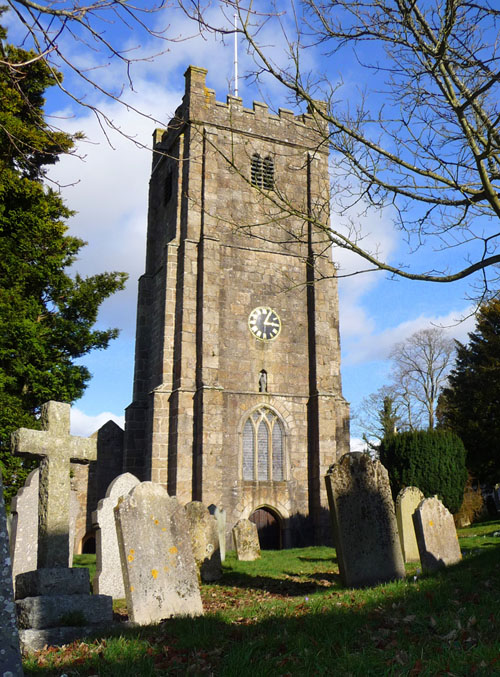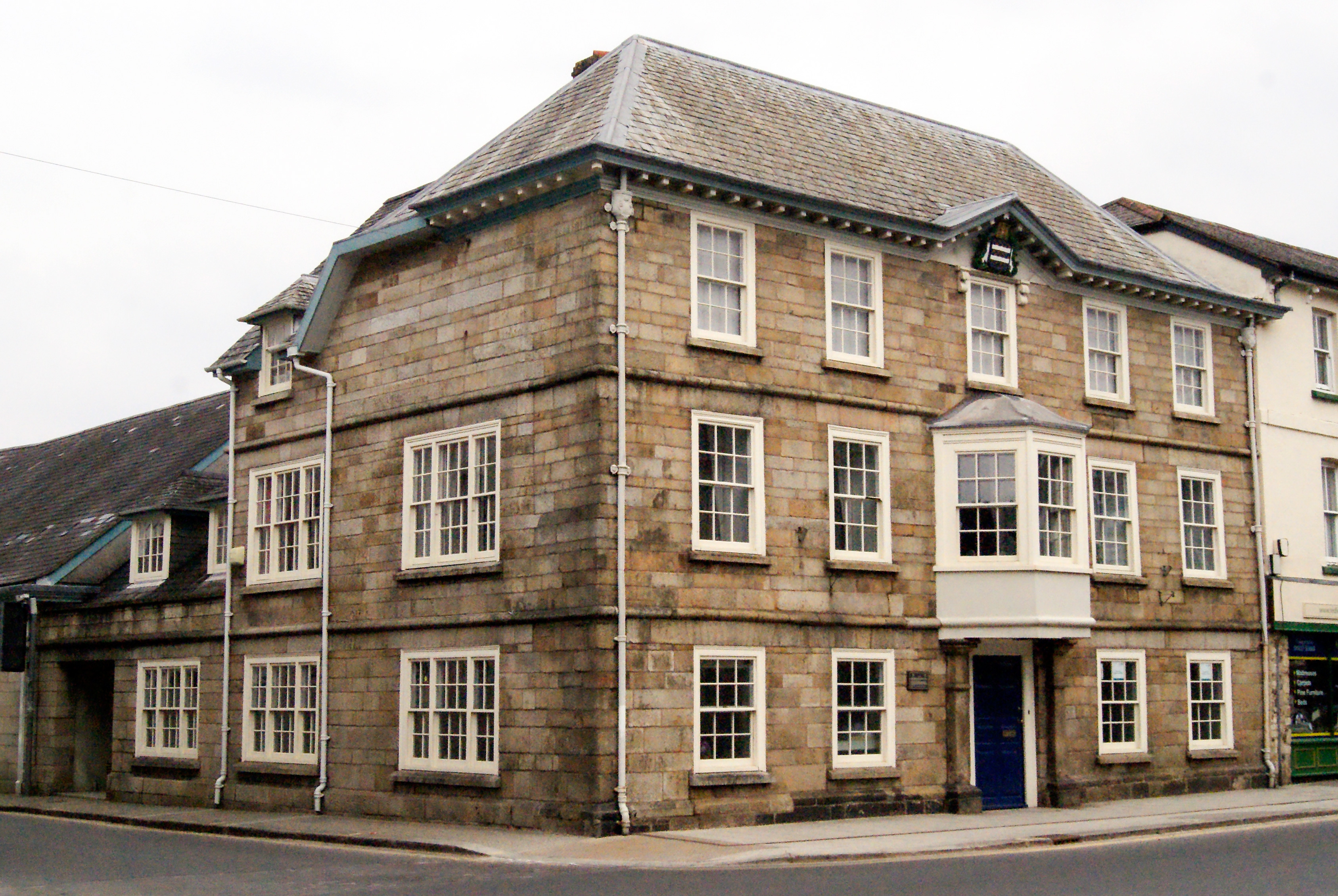|
Throwleigh
Throwleigh () is a village and civil parish located 3 miles from Chagford and 6 miles from Okehampton, in the West Devon district, in the county of Devon, England. The parish incorporates the village of Throwleigh and the hamlets of Wonson, Providence, and Murchington, whose combined population is approximately 350. Throwleigh has an Anglican church dedicated to St Mary the Virgin, first recorded in 1268. At Providence, which lies mid-way between Throwleigh and Gidleigh, a Bible Christian (subsequently Methodist) Chapel ('Providence Chapel') was founded in 1839, and is still operating. In 1877 the Chapel founded an elementary school ('Providence School') which became Throwleigh & Gidleigh County Primary School, closing in 1971 when the pupils were transferred to Chagford. The hamlet of Wonson, a mile from Throwleigh village, provides the Northmore Arms public house and Throwleigh Village Hall, the latter built in 1949 from a WW2 Nissen hut A Nissen hut is a prefabricated st ... [...More Info...] [...Related Items...] OR: [Wikipedia] [Google] [Baidu] |
Throwleigh Church
Throwleigh () is a village and civil parish located 3 miles from Chagford and 6 miles from Okehampton, in the West Devon district, in the county of Devon, England. The parish incorporates the village of Throwleigh and the hamlets of Wonson, Providence, and Murchington, whose combined population is approximately 350. Throwleigh has an Anglican church dedicated to St Mary the Virgin, first recorded in 1268. At Providence, which lies mid-way between Throwleigh and Gidleigh Gidleigh is a village and civil parish in the West Devon district of Devon, England. Located within Dartmoor National Park, the parish is surrounded clockwise from the north by the parishes of Throwleigh, Chagford and Dartmoor Forest. In 2001 ..., a Bible Christian (subsequently Methodist) Chapel ('Providence Chapel') was founded in 1839, and is still operating. In 1877 the Chapel founded an elementary school ('Providence School') which became Throwleigh & Gidleigh County Primary School, closing in 1971 ... [...More Info...] [...Related Items...] OR: [Wikipedia] [Google] [Baidu] |
St Mary's Church, Throwleigh
St Mary's Church dates from the late 13th-century, and is a Grade I listed parish church in the Church of England Diocese of Exeter in Throwleigh, Devon. History The earliest parts of the church date from the late 13th early 14th century, but it was largely rebuilt in the 15th century. The north aisle was added in the 16th century. The church is noted by Pevsner for the Easter Sepulchre. The pulpit is built of wooden panelling formerly part of the rood screen of 1544. The church was restored in 1884 and reopened for worship on 6 August 1884. The architect was F. Hunt of Baker Street, London and the work carried out by Aggatt and Underhill of Chagford. New nave seating was provided. The walls were scraped and repointed, and the archway to the tower was opened up. Organ The pipe organ sits at the back of the north aisle. It was built by Bevington of London and later extended by Hele and Co of Plymouth. A specification of the organ can be found in the National Pipe Organ Registe ... [...More Info...] [...Related Items...] OR: [Wikipedia] [Google] [Baidu] |
Gidleigh
Gidleigh is a village and civil parish in the West Devon district of Devon, England. Located within Dartmoor National Park, the parish is surrounded clockwise from the north by the parishes of Throwleigh, Chagford and Dartmoor Forest. In 2001 its population was 116, little changed from 114 in 1901. Historically the parish consisted of a number of farmsteads and associated cottages scattered around the focal point of Holy Trinity church (late C15-early C16, with some C17 windows and C19 additions) and the adjacent Gidleigh Castle, which is now in private hands. The population peaked at 180 in the mid 19th century. The 20th century saw the development of some substantial gentleman's residences - notably Gidleigh Park, which subsequently became a country house hotel - and the building of a village hall. Gidleigh lies on the Mariners' Way and there was a YHA Youth Hostel in the village from 1932 to 1988. A Methodist elementary school established in 1877 at Providence in Thro ... [...More Info...] [...Related Items...] OR: [Wikipedia] [Google] [Baidu] |
Chagford
Chagford is a market town and civil parish on the north-east edge of Dartmoor, in Devon, England, close to the River Teign and the A382, 4 miles (6 km) west of Moretonhampstead. The name is derived from ''chag'', meaning gorse or broom, and the ''ford'' suffix indicates its importance as a crossing place. At the 2011 Census, it had a population of 1,449. History Archaeological remains confirm that a community has existed here for at least 4000 years. In historical times, Chagford grew due to the wool trade and from tin mining in the area. A weekly market was held here from before 1220, and a monthly livestock market in the town survived until the 1980s. In 1305 it was made a stannary town where tin was traded. Among the most prominent tin-mining families in the 16th century were the Endecotts, Knapmans, Whiddons and Lethbridges. In an English Civil War skirmish Sidney Godolphin, the poet and Royalist MP for Helston, was shot and killed in the porch of the Three Crowns. In ... [...More Info...] [...Related Items...] OR: [Wikipedia] [Google] [Baidu] |
Okehampton
Okehampton ( ) is a town and civil parishes in England, civil parish in West Devon in the English county of Devon. It is situated at the northern edge of Dartmoor, and had a population of 5,922 at the 2011 census. Two electoral wards are based in the town (east and west). Their joint population at the same census was 7,500. Okehampton is 21 miles (33 km) west of Exeter, 26 miles (42 km) north of Plymouth and 24 miles (38 km) south of Barnstaple. History Okehampton was founded by the Saxons. The earliest written record of the settlement is from 980 AD as , meaning settlement by the Ockment, a river which runs through the town. It was recorded as a place for slaves to be freed at cross roads. Like many towns in the West Country, Okehampton grew on the medieval wool trade. Notable buildings in the town include the 15th century chapel of James, son of Zebedee, St. James and Okehampton Castle, which was established by the Normans, Norman High Sheriff of Devon, Sherif ... [...More Info...] [...Related Items...] OR: [Wikipedia] [Google] [Baidu] |
West Devon
West Devon is a local government district and borough in Devon, England. Towns and villages in the district include Chagford, Okehampton, Princetown and Tavistock, where the council is based. The district was formed on 1 April 1974, under the Local Government Act 1972, as a merger of the previous municipal borough of Okehampton, Okehampton Rural District, and Tavistock Rural District. West Devon contains most of Dartmoor. Politics Elections to the borough council are held every four years with 31 councillors representing 22 wards. In 2013, the Local Government Boundary Commission for England initiated a review of West Devon with the aim of delivering electoral equality amongst voters at local elections, with each councillor representing a similar number of voters and with ward boundaries reflecting the interests and identities of local communities. After a consultation period, the commission recommended that West Devon should continue to be represented by 31 councillors ... [...More Info...] [...Related Items...] OR: [Wikipedia] [Google] [Baidu] |
Devon
Devon ( , historically known as Devonshire , ) is a ceremonial and non-metropolitan county in South West England. The most populous settlement in Devon is the city of Plymouth, followed by Devon's county town, the city of Exeter. Devon is a coastal county with cliffs and sandy beaches. Home to the largest open space in southern England, Dartmoor (), the county is predominately rural and has a relatively low population density for an English county. The county is bordered by Somerset to the north east, Dorset to the east, and Cornwall to the west. The county is split into the non-metropolitan districts of East Devon, Mid Devon, North Devon, South Hams, Teignbridge, Torridge, West Devon, Exeter, and the unitary authority areas of Plymouth, and Torbay. Combined as a ceremonial county, Devon's area is and its population is about 1.2 million. Devon derives its name from Dumnonia (the shift from ''m'' to ''v'' is a typical Celtic consonant shift). During the Briti ... [...More Info...] [...Related Items...] OR: [Wikipedia] [Google] [Baidu] |
Nissen Hut
A Nissen hut is a prefabricated steel structure for military use, especially as barracks, made from a half-cylindrical skin of corrugated iron. Designed during the First World War by the American-born, Canadian-British engineer and inventor Major Peter Norman Nissen, it was used also extensively during the Second World War, being adapted as the similar Quonset hut in the United States. Description A Nissen hut is made from a sheet of metal bent into half a cylinder and planted in the ground with its axis horizontal. The cross-section is not precisely semi-circular, because the bottom of the hut curves out slightly. The exterior is formed from curved corrugated steel sheets 10 feet 6 inches by 2 feet 2 inches (3.2 × 0.7 m), laid with a two-corrugation lap at the side and a 6-inch (15 cm) overlap at the ends. Three sheets cover the arc of the hut. They are attached to five 3 × 2 inch (7.5 × 5 cm) wooden purlins and 3 × 2 inch wooden spiking ... [...More Info...] [...Related Items...] OR: [Wikipedia] [Google] [Baidu] |
Villages In The Borough Of West Devon
A village is a clustered human settlement or community, larger than a hamlet but smaller than a town (although the word is often used to describe both hamlets and smaller towns), with a population typically ranging from a few hundred to a few thousand. Though villages are often located in rural areas, the term urban village is also applied to certain urban neighborhoods. Villages are normally permanent, with fixed dwellings; however, transient villages can occur. Further, the dwellings of a village are fairly close to one another, not scattered broadly over the landscape, as a dispersed settlement. In the past, villages were a usual form of community for societies that practice subsistence agriculture, and also for some non-agricultural societies. In Great Britain, a hamlet earned the right to be called a village when it built a church. [...More Info...] [...Related Items...] OR: [Wikipedia] [Google] [Baidu] |





